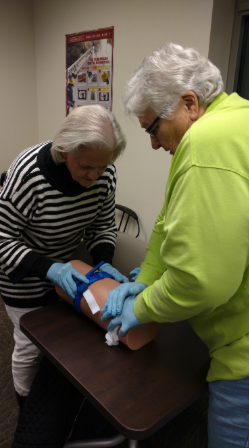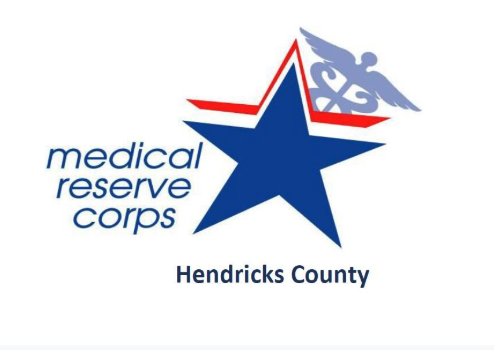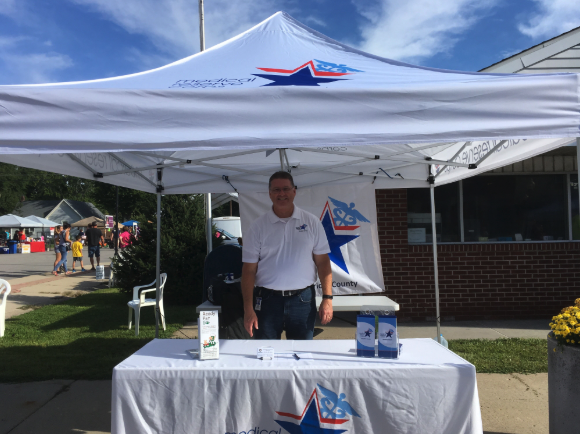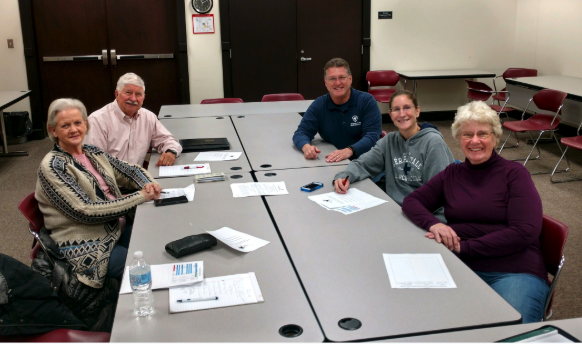The Medical Reserve Corps of Hendricks County is Ready to Serve
 On September 11, 2001, thousands of volunteers showed up at the World Trade Center in New York City, desperate to offer help. But given the mass chaos and the fact that folks lacked identification, credentials and an organized plan of attack, many well-meaning citizens were turned away. Following this national tragedy and its aftermath, the Citizens Corps Council was formed and, as a byproduct of that, the Medical Reserve Corps (MRC) — with a purpose to organize and train groups of volunteers to aid existing community response teams in the event of national, regional or local emergencies.
On September 11, 2001, thousands of volunteers showed up at the World Trade Center in New York City, desperate to offer help. But given the mass chaos and the fact that folks lacked identification, credentials and an organized plan of attack, many well-meaning citizens were turned away. Following this national tragedy and its aftermath, the Citizens Corps Council was formed and, as a byproduct of that, the Medical Reserve Corps (MRC) — with a purpose to organize and train groups of volunteers to aid existing community response teams in the event of national, regional or local emergencies.
According to Jeff Corder, the Public Health Preparedness Coordinator of the Hendricks County Health Department, a total of 900 units exist across the country with upwards of 200,000 volunteers. Prior to Corder’s current position, he was a Brownsburg firefighter for 25 years so he knows what it is to jump in and take charge during disasters.
“When tragedy strikes, people often show up wanting to help, like with 911,” Corder says. “Those are what we call ‘spontaneous unaffiliated volunteers.’ We like to have affiliated volunteers who have background checks and have been trained beforehand so that they know what to do and we can organize them.”
The Medical Reserve Corps of Hendricks County, created in 2007, has had as many as 230 members and as few as 25. They currently have 50 and are always in search of more. Therefore, Corder spends a lot of his time recruiting people to get involved with the MRC.
“I think there’s often a hesitancy because of the term ‘medical.’ People assume they need a medical background to participate, but they don’t,” Corder says. “And Reserve Corps sounds military, which also is misleading.” He stresses that they welcome people of all vocations — everyone from translators to veterinarians, electricians to construction workers, valets to amateur radio operators. “Anybody and everybody can help out in a disaster situation,” Corder says.
Another reason folks are sometimes reluctant to volunteer is because they fear that in the event of a county disaster, they will be expected to abandon their families to come volunteer, but that’s not the case. Having said that, volunteers should take their commitment seriously.
Part of Corder’s job is making sure he has sites identified as Points of Dispensing (PODs) in the event of a public health emergency. For instance, if there is an exposure to a toxic element that requires mandatory countywide vaccinations in a short period of time, the MRC aids in that effort by supplementing the health department to staff PODS around the county. The main one they use is the Hendricks County Fairgrounds, though there are four schools in the county they use as well. It takes 42 people to staff one POD.
 “We’d like to have enough volunteers to set up at least two PODS,” Corder says.
“We’d like to have enough volunteers to set up at least two PODS,” Corder says.
The PODs can be set up for volunteers to distribute medication but can also be modified to hand out food, water, blankets or other essential items.
Corder enjoys working with all demographics, though most of his leadership consists of retired doctors, nurses and dentists who are eager to give back to the community. Retired physician Bruce Matis joined the MRC because he saw a great need for supplemental assistance in the case of a community catastrophe.
“I want the highly trained emergency personnel to be able to use their skills instead of doing jobs others can do,” Matis says. “In an operating room, one does not have five surgeons involved in a procedure but others assisting the highly trained surgeon. This way more can be accomplished.” The question Corder gets the most is, “How is the Medical Reserve Corps different than the Red Cross?”
“People are confused because we do similar things,” Corder says.
And that’s precisely what he likes. In fact, when he first came on staff, he immediately met with a Red Cross representative to draft a letter of agreement between the two entities that stated that in the event of a disaster, the groups would work together to provide relief to those in need.
“I said, ‘I don’t want to see the MRC volunteers over here and the Red Cross volunteers over there,” Corder says. “I wanted us to collaborate and share resources.”
Therefore, they run joint meetings and training sessions so MRC people know how to set up Red Cross shelters and Red Cross people know how to assist in Points of Dispensing.
 Corder encourages his volunteers not only to get involved in Hendricks County but all across Indiana. SERVE Indiana has a state of emergency registry of volunteers to pull from in the event of state disasters (called Emergency Management Assistance Compacts or EMAC requests). For instance, following Hurricane Florence, 10 Indiana nurses traveled to North Carolina to lend a hand. A group of volunteers also were summoned to the U.S. Virgin Islands after Hurricane Maria hit. And during the wildfires in California, MRC units set up medical clinics.
Corder encourages his volunteers not only to get involved in Hendricks County but all across Indiana. SERVE Indiana has a state of emergency registry of volunteers to pull from in the event of state disasters (called Emergency Management Assistance Compacts or EMAC requests). For instance, following Hurricane Florence, 10 Indiana nurses traveled to North Carolina to lend a hand. A group of volunteers also were summoned to the U.S. Virgin Islands after Hurricane Maria hit. And during the wildfires in California, MRC units set up medical clinics.
Tornadoes and floods are the two most common disasters Hoosiers face, followed closely by power outages caused by winter storms or excessive heat in the summer. The MRC not only prepares for such events but they also plan for the potential for hazardous materials spills on major highways.
“We have I-70 and I-74 so there’s the chance for such incidents,” Corder says.
A big part of Corder’s job is simply letting the public know the purpose and mission of the MRC.
“I’ll be honest. I didn’t know the MRC existed when I was a firefighter,” says Corder, who now attends fairs, festivals and other community outings to spread the word.
Joe Valorani joined the MRC when he heard that Corder was looking for someone to head up a disaster animal response team. A passion of Valorani’s for the past five years, he took a class on how to decontaminate animals.
“Jeff saw us working on the IMPD horses. Shortly after he asked me to head up HART, Hendricks Animal Rescue Taskforce,” Valorani adds.
Corder knows that a lot of people won’t evacuate if they can’t take their pets with them. So, he wants to set up animal shelters near human shelters. Plus, if there was a situation with a lot of human fatalities, what would become of their pets? Given that Animal Control is at capacity, Corder has met with different organizations within the county, including the Humane Society, the State Board of Animal Health, Misty Eyes Animal Shelter and other animal rescue groups to determine what can be done.
“When I’m out at festivals or fairs, you would be surprised how many people tell me, ‘I’m just not as much into people as I am into animals. If you had something for animals, I’d be interested in volunteering,’” says Corder, who is trying to use Hendricks County as a model for setting up an animal response team. The State Board of Animal Health maintains that they would like to get every county to join in the effort.
Earlier this year, the MRC began retooling their volunteer system in Hendricks County in hopes of attracting additional volunteers.
“Basically, people put in an application, get a background check done, do some basic incident command training online and then are sent to where their interest lies in volunteering,” Corder says. “This will allow more people to volunteer across more areas to be useful for us in a disaster situation.”
If you are 18 years or older and would like to learn more about how to volunteer with the MRC of Hendricks County, email mrc@co.hendricks.in.us or call 317-745-9214. The Medical Reserve Corps of Hendricks County is located at 355 S. Washington St. #210 in Danville.






